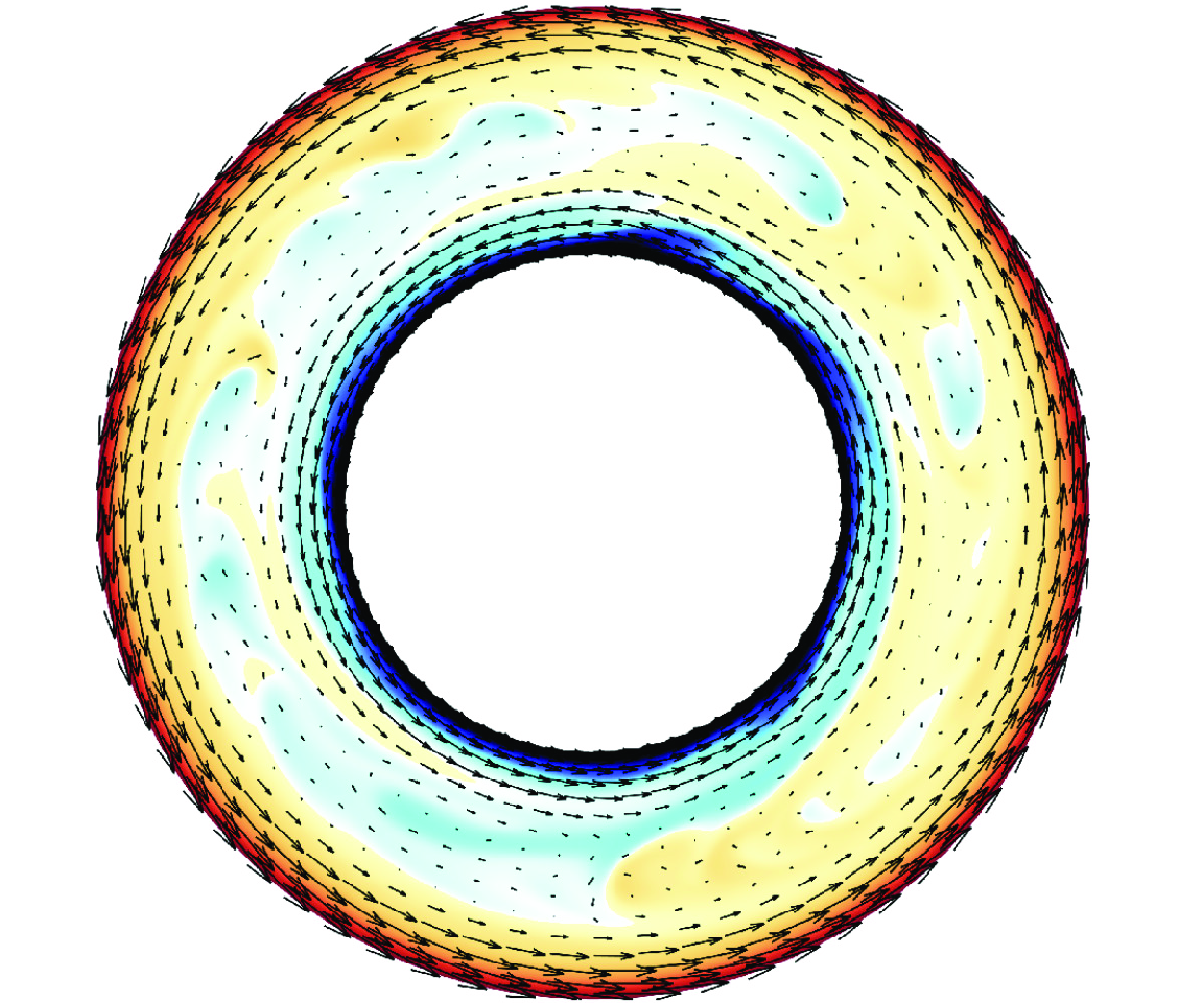No CrossRef data available.
Article contents
Centrifugal convection with oscillating rotating velocity
Published online by Cambridge University Press: 15 May 2025
Abstract

We perform direct numerical simulations of centrifugal convection with an oscillating rotational velocity of small amplitude to study the effects of oscillatory boundary motion. The oscillation period is the main control parameter, with its range corresponding to a Womersley number in the range  $1\lt Wo\lt 300$. Oscillating boundaries generate a circumferential shear flow, which significantly inhibits heat transfer, with maximum suppression
$1\lt Wo\lt 300$. Oscillating boundaries generate a circumferential shear flow, which significantly inhibits heat transfer, with maximum suppression  $87\,\%$ observed in the present parameter space. Through analysis of the background flow, we find that as the oscillation period increases, the increasing penetration depth of the oscillation and weakening local shear strength result in non-monotonic changes in heat transfer. Under high-frequency oscillation, the characteristic length scale of the viscous layer induced by the oscillation is smaller than the convective length scale, and shear manifests primarily as a continuous suppression of the boundary layer. In contrast, under low-frequency oscillation, the shear flow covers the entire region but with weak strength. The suppression effect of such shear flow exhibits periodicity, leading to alternating phases of convection inhibition and convection generation. The present findings explore the physical mechanisms behind the suppression of convective heat transfer by oscillation, and offer a new strategy for controlling convection systems, with potential implications for both fundamental research and industrial applications.
$87\,\%$ observed in the present parameter space. Through analysis of the background flow, we find that as the oscillation period increases, the increasing penetration depth of the oscillation and weakening local shear strength result in non-monotonic changes in heat transfer. Under high-frequency oscillation, the characteristic length scale of the viscous layer induced by the oscillation is smaller than the convective length scale, and shear manifests primarily as a continuous suppression of the boundary layer. In contrast, under low-frequency oscillation, the shear flow covers the entire region but with weak strength. The suppression effect of such shear flow exhibits periodicity, leading to alternating phases of convection inhibition and convection generation. The present findings explore the physical mechanisms behind the suppression of convective heat transfer by oscillation, and offer a new strategy for controlling convection systems, with potential implications for both fundamental research and industrial applications.
JFM classification
Information
- Type
- JFM Papers
- Information
- Copyright
- © The Author(s), 2025. Published by Cambridge University Press


